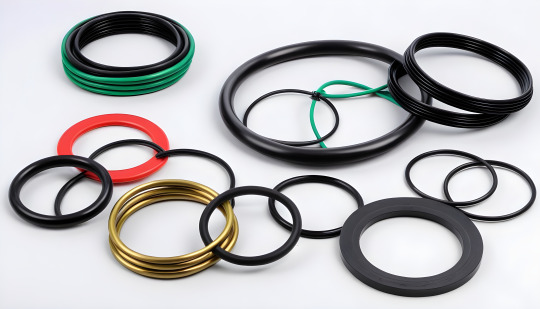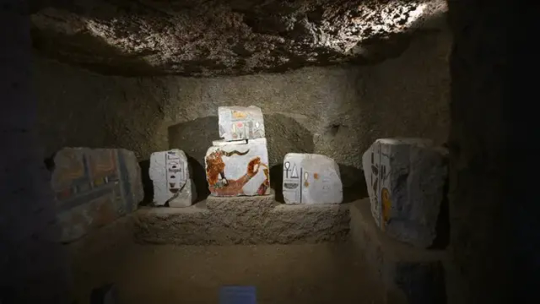#Hammers for Excavators
Explore tagged Tumblr posts
Text

Martillos hidráulicos asequibles en oferta
Los martillos hidráulicos Hammermaxx en venta brindan una potencia excepcional a costos incomparables. Estos martillos son perfectos para romper roca, concreto y asfalto debido a su diseño de alto rendimiento y durabilidad, que garantiza una eficiencia óptima para sus requisitos de construcción.
0 notes
Text



Costume for a friend's masquerade :D
#loosely inspired by the Sinosauropteryx. but mostly based around Looking Cool and also Fitting On My Face#artists on tumblr#mask#maskmaker#costume#art#paper mache#anthro#dinosaur#i dare not go into any other paleo tags for fear of ppl who actually know things about dinosaurs attacking me with hammers#and chisels. and those little brushes they use for their excavations#the masquerade theme was vampires vs dinosaurs — it was fun getting a prompt to force me outside my usual Meaty And Horrible comfort zone#that being said long time no meaty horrors. gotta remedy that soon
946 notes
·
View notes
Text
i’m exhausted and my entire body hurts
#I went swimming three days in a row while dogsitting#because every time I get in a pool my body says ‘LET’S NOT WASTE THIS GOLDEN OPPORTUNITY’ and goes nuts#so before i know it i’ve swum actual miles in a pool that’s pretty moderately-sized for a backyard one#i might legitimately take a nap on the couch when i’m there today#especially since the dog is usually napping after a bit that time of day as well#i’m lucky this is fun because my pay is contributing to the fixing of the leak in yhe bathroom#my poor dad has to hammer into the floor to get to it#it’s not as bad as when he recently had to EXCAVATE HIS WAY UNDER THE HOUSE FOR A DIFFERENT LEAK#we would be so fucked without this opportunity
6 notes
·
View notes
Photo

Cracking up rocky layers
8 notes
·
View notes
Text

Mini excavator jack hammer rental-Jumarental For your construction needs, rent a mini excavator jackhammer rental or small jackhammer rental for efficient, compact demolition work. Looking for larger machinery? Opt for a wheel excavator rental in Dubai or a backhoe jackhammer for heavy-duty excavation, ensuring reliable performance on any project site. https://jumarental.com/mini-jackhammer-rental/
#Small excavator rental UAE#Mini excavator rental in Dubai#Mini excavator for rent in Dubai#Mini excavator jack hammer rental#Small jackhammer rental#Mini jackhammer rental#Mini excavator jackhammer Dubai#Backhoe jackhammer Dubai#Swimming pool demolition Dubai#Swimming Pool Demolition Contractors in Dubai
0 notes
Text
What are the Components of a Vibratory Hammer?
Vibratory hammers are essential construction tools used for driving and extracting piles. They are known for their efficiency and effectiveness in various environments. One of the most common applications is the vibratory pile driver for excavator, which is highly valued in the industry. This article will explore the components and benefits of vibratory hammers, focusing on excavator-mounted models and other variations.
0 notes
Text
How Can Jack Hammer Hire Speed Up Your Construction Projects?

When it comes to construction projects, time is often of the essence. Whether breaking through concrete, demolishing old structures, or setting up new foundations, having the right tools can make all the difference.
One tool that stands out for its efficiency and effectiveness is the jackhammer. But how can Jack Hammer hire in Melbourne services to help you accelerate your construction projects? Let's dive in and explore the benefits!
Why Choose a Jack Hammer?
Jackhammers, or pneumatic drills, are incredibly powerful tools to break up hard materials such as concrete and asphalt. Their robust design and impressive force make them ideal for heavy-duty demolition and construction tasks. If you're looking to speed up your project, here's why a jackhammer is your go-to tool:
Increased Efficiency: A jackhammer can tackle tough materials much faster than manual tools. This increased efficiency means you can complete tasks more quickly, reducing project time.
Power and Precision: With their high-impact force, jackhammers can precisely breakthrough materials, allowing for cleaner and more accurate demolition.
Versatility: Whether you're working on a small renovation or a large-scale construction project, a jackhammer can handle various tasks, from breaking up concrete to removing old tiles.
The Benefits of Jack Hammer Hire Melbourne
Hiring a jackhammer through a Jack Hammer Hire Melbourne service offers several advantages, especially if you only use the tool briefly. Here's how hiring can benefit your project:
1. Cost-Effective Solution
Purchasing a jackhammer can be a significant investment, particularly if you only need it for a one-time project. Jack Hammer Hire services provide a cost-effective alternative, allowing you to rent the equipment you need without the long-term expense of ownership.
2. Access to Top-Quality Equipment
You gain access to well-maintained, high-quality equipment when you hire from a reputable provider. This means you'll use the latest models with up-to-date features, ensuring optimal performance and safety on your job site.
3. Flexibility and Convenience
Hiring a jackhammer offers flexibility, allowing you to choose the rental duration based on your project needs. Jack Hammer Hire Melbourne services can accommodate your schedule, whether you need it for a day or a few weeks. This convenience helps you stay on track and complete your project on time.
4. Expert Support and Guidance
Most services provide expert advice and support to help you choose the right tool for your project. They can offer guidance on operating the equipment safely and effectively, ensuring you get the best results from your rental.

How to Maximise Your Jack Hammer Rental
To make the most of your Jack Hammer Hire Melbourne experience, keep these tips in mind:
1. Assess Your Project Needs
Before hiring, evaluate the scope of your project and the type of jackhammer that will best suit your needs. Consider factors such as the material you'll be working with and the area size to be covered.
2. Follow Safety Guidelines
Operating a jackhammer requires safety precautions to prevent accidents and injuries. Always follow the manufacturer's instructions and wear appropriate safety gear like gloves, goggles, and hearing protection.
3. Regular Maintenance
Although you're renting, taking care of the equipment is important. Keep the jackhammer clean and well-maintained throughout the rental period. This ensures optimal performance and helps avoid any additional damage fees.
4. Return on Time
Adhering to the agreed-upon return date helps you avoid late fees and allows the rental service to prepare the equipment for the next customer. If you need the jackhammer for an extended period, communicate with the rental service to arrange an extension.
Conclusion
Incorporating a jackhammer into your construction project can significantly boost efficiency and speed. By opting for excavator hire in Melbourne services, you gain access to high-quality equipment without the heavy investment of purchasing.
Enjoy the benefits of cost-effective solutions, expert support, and the flexibility to tailor your rental to your project's needs.
So, next time you're gearing up for a construction task, consider how Jack Hammer Hire Melbourne can help you get the job done faster and more effectively!
Feel free to contact a local Jack Hammer Hire Melbourne provider to explore your options and start your project on the right foot.
1 note
·
View note
Text
MTB 505 Hydraulic Breakers Seal Kit for Kubota Case Caterpillar Hitachi Bobcat Gradall Komatsu John Deere Liebherr Excavators
MTB 505 hydraulic breakers hammer seal kit for Kubota, Case, Caterpillar, Hitachi, Bobcat, Gradall, Komatsu, John Deere, Liebherr, excavators is stock available. This comprehensive kit includes all the seals you need to rebuild your MTB 505 hydraulic breakers hammer, including: Piston seals Guide seals Cushion seals O-rings Backup rings Benefits of using the MTB 505 hydraulic breakers…

View On WordPress
#BOBCAT#Breaker#CASE#CATerpillar#dozer#excavator#G90#GRADALL#Hammer#Hydraulic#JOHN DEERE#Kit#KOMATSU#Kubato#Liebherr#MTB#MTB 505#MTB505#Rammer#rock#Seal
0 notes
Video
youtube
Powerful Tools, Precise Results Demolition Hammer & Mini Excavator Rentals
0 notes
Text
Contact us for construction equipment and attachment on rent. We are Importing and renting of construction equipment and attachments, heavy breaker, medium breaker, small breaker, general crusher, pulverizer, compactor, hydraulic quick coupler etc. Call now to book an appointment : 8224848777
#jcb 3dx breaker price#bti rock breaker#breaker attachment for backhoe#backhoe breaker attachment#jcb rock breaker price#backhoe hammer attachment#breaker attachment for excavator#backhoe hydraulic breaker#excavator breaker attachment#hydraulic clamshell#backhoe hydraulic hammer#backhoe rock hammer#backhoe loader breaker#jcb hydraulic breaker
0 notes
Text
In the weeks since Hamas' Oct. 7 attack, Israeli airstrikes on the Gaza Strip have killed more than 15,000 Palestinians, according to Gaza's health ministry, and destroyed thousands of homes in the territory.
And there have also been tremendous losses to the region's ancient and globally significant cultural heritage. The region was a hub for commerce and culture under Egyptian, Greek, Roman and Byzantine rule. It remained influential for centuries thereafter.
A recent survey by the group Heritage for Peace details the damage done so far to more than 100 of these landmarks in Gaza since the start of the present conflict.
The casualties include the Great Omari Mosque, one of the most important and ancient mosques in historical Palestine; the Church of Saint Porphyrius, thought to be the third oldest church in the entire world; a 2,000-year-old Roman cemetery in northern Gaza excavated only last year; and the Rafah Museum, a space in southern Gaza which was dedicated to teaching about the territory's long and multi-layered heritage — until it was hammered by airstrikes early on in the conflict. (...)
"If this heritage be no more in Gaza, it will be a big loss of the identity of the people in Gaza," said Isber Sabrine, president of Heritage for Peace, in an interview with NPR. (...)
"The people in Gaza, they have the right to keep and to save this heritage, to tell the history, the importance of this land," he said.
The 1954 Hague Convention, agreed to by Palestinians and Israelis, is supposed to safeguard landmarks from the ravages of war. But landmarks in Gaza have been destroyed by Israeli strikes in earlier rounds of fighting. Dozens of sites, including the now-obliterated Great Omari Mosque, suffered damage in 2014. A report by UNESCO, the United Nations body that designates and protects World Heritage sites, cites further destruction to cultural and historic sites in Gaza in 2021. (...)
Destruction of historical sites and other cultural sites is part of genocide, it's the destruction of the proof of a people's relationship to the land and a horrible emotional blow at the community. UNESCO must act immediately against Israel's destruction of Palestinian heritage, and every country and international organism must expel Israel and impose sanctions to make the genocide and apartheid end.
#💬#palestine#gaza#israel#free palestine#world heritage#cultural heritage#historical sites#archaeology#cultures
2K notes
·
View notes
Text
take it slow just as fast as i can

character: boothill notes: i just rly, genuinely think boothill would be obsessed with feeling every fucking inch of you, that’s all c: | title credit: body like a back road by sam hunt warnings: 18+ minors do not interact, fem reader, thinly veiled body worship, mentions of scars + implied stretch marks and cellulite, marking (biting and bruising), implied multiple orgasms, tiny bit of angst right at the end words: 830

boothill knows your body better than he knows anything else in the cosmos.
boothill knows your body better than he knows his own—better than he knows his scorched, excavated homeland, better than he knows the smooth metal ripples and ridges, cold curves and contours of his own so called ‘body’, better than he knows his cherished 9mm revolver—the ivory grip, pretty pearlescent nacre shimmering up at him delicately from between the gaps of mechanized fingers, stamped with that gilded eagle sigil; the artfully notched cylinder, embossed with decorative arrows—six, one for each chamber—and the angular hammer, piped with shimmering aureate; the golden barrel, intricate inclinations carved to sharp, exquisite perfection.
boothill knows every curve, every dip, every edge of your form—all of your lines and dimples and scars, and could map them out with his eyes closed and recite each corresponding story: a single metallic fingertip tracing along the jagged strikes of silver etched into your skin; his hard thumbprint pressing into the dents peppering your thighs, a cool knuckle skimming over that scar on your knee.
and boothill loves appreciating them, appreciating you, appreciating how it all comes together to create one of the most magnificent masterpieces he’s ever had the pleasure of touching, the privilege of loving.
it’s become somewhat of a ritual now to take his sweet time admiring your figure before he fucks it, feeling every part of you plush and pliant beneath his grooved palms, revelling in the soft gasps that stutter your chest and dainty shivers that ripple your flesh as he kneads it.
he fills his touch with it, grabs healthy handfuls and squeezes—so soft, so supple—alternating between harsh groping, iron fingers sinking into your thighs, your hips, your tits, and gentle caressing, bullseye gaze watching with sheer wonderment as his palms glide over your silhouette, slick lips parted and damp with panted breath.
sometimes he’ll just let his hand rest on your ribs, observing the way it rises and falls with each of your quiet breaths, feeling oxygen expand your lungs as it flows in, then feeling your chest depress with every exhale pushed up your throat.
he loves to experience the thrum of your pulse beneath his fingertips—nothing more than a faint fluttering pressure against his receptors, but present nonetheless—an undeniable confirmation that you are indeed here, alive, his.
so beautiful, he murmurs from between your thighs, one large hand pressed flush against your heart, his chin resting on your stomach. a work of fudgin’ art, baby, I swear to the stars.
it all gets him going so goddamn easily, instils a hunger in him so ferocious that it chews on his wires, zipping through the cables in sparks of desire until it devours his brain, gorges every thought and notion until all he can conceive, all he needs, is you.
he can’t help but lick and kiss and bite and suck, desperate to leave his own impermanent marks on this gorgeous canvas. bruises blossom in the shapes of his fingerprints, sprouted in clusters of five across your form. engravings of razored teeth litter your thighs and hips, his gnawing just a hint shy of too strong, leaving behind wide crescents of thirty-two little crimson pinpricks. petals of thick saliva dry hard and stiff on your stomach and neck and collarbone, planted into your skin by puckered lips and chaste kisses.
it’s customary that he murmur sweet nothings into every claim he creates, knowing that his words will seep into your tissues in the form of gentle vibrations, knowing that they will stay, even after his marks fade.
your body is art, too, you tell him softly, after he’s made you cum several times on his cock, iron shimmering with a thick coat of your arousal, slick he refuses to clean off. a tender finger traces along the tears laden across his torso, rough and saw-toothed—scars he refuses to let heal.
no, he murmurs, rubbing his mouth into your shoulder as he speaks, eyes closing briefly with a slow, deep inhale. not the way yours is.
your body is a storybook of your life, inscribed with tales and memories—the way your body developed as you entered womanhood, too quick for your delicate skin to keep up with, procuring shimmering streaks across your breasts and bum; the time you flipped your childhood bicycle, kneecaps scraping concrete, bloody and raw; that dark dash seared along your inner arm, a constant reminder of an earnest mistake, when you accidentally nudged the rim of a pot filled with boiling water.
his body was carved in a lab, too precise to be real, too perfect to be human, constantly torn apart and put back together; rearranged, scrambled, chock full of modifications he never asked for, never agreed to. a true horror story—a weapon of death and destruction, a film of inevitable demise clinging to the metal.
he fears that’s all it ever will be.
#boothill x reader#boothill x you#boothill smut#boothill angst#boothill x y/n#hsr smut#honkai star rail x reader#honkai star rail x you#if you saw me post this to my main blog just a second ago no u didn't#inky.boothill
525 notes
·
View notes
Text
"Eternal Sunshine of the Spotless Mind" doesn’t just explore memory—it excavates it, peeling back layers of trauma, vulnerability, and connection. This particular scene, where young Joel faces peer pressure to harm a dead bird, is a gut punch of emotional storytelling.
The moment isn’t just about childhood cruelty; it’s a metaphor for the emotional wounds Joel carries into adulthood. The hammer isn’t just a tool—it’s a symbol of destruction, both external and internal, hinting at the scars Joel struggles to hide. The scene dives into themes of lost innocence and the lasting weight of formative experiences, showing how those early fractures echo through time.
But then there’s Clementine. Her presence in this memory as a source of comfort reframes their relationship entirely. She’s not just a romantic partner—she’s a lifeline, a reminder that Joel’s need for connection has always been tied to his need for healing.
In true Charlie Kaufman and Michel Gondry fashion, the sequence blends surreal visuals with emotional realism, turning fragmented memories into a mosaic of longing and regret. It perfectly encapsulates the film’s core message—that love, even when painful, is inextricable from the stories we tell ourselves about who we are.
157 notes
·
View notes
Text
"Ram in the Thicket" Statuette from Ur (Iraq), c.2600-2400 BCE: this statuette is made of lapis lazuli, shells, gold, silver, limestone, copper, and wood

This sculpture is about 4,500 years old. It was unearthed back in 1929, during the excavation of the "Great Death Pit" at the Royal Cemetery of Ur, located in what was once the heart of Mesopotamia (and is now part of southern Iraq).

Sir Leonard Woolley, who led the excavations at the site, nicknamed the statuette "ram caught in a thicket" as a reference to the Biblical story in which Abraham sacrifices a ram that he finds caught in a thicket. The statuette is still commonly known by that name, even though it actually depicts a markhor goat feeding on the leaves of a flowering tree/shrub. Some scholars refer to it as a "rampant he-goat" or "rearing goat," instead.

It was carved from a wooden core; gold foil was then carefully hammered onto the surface of the goat's face and legs, and its belly was coated in silver paint. Intricately carved pieces of shell and lapis lazuli were layered onto the goat's body in order to form the fleece. Lapis lazuli was also used to create the goat's eyes, horns, and beard, while its ears were crafted out of copper.
The tree (along with its delicate branches and eight-petaled flowers) was also carved from a wooden base, before being wrapped in gold foil.
The goat and the tree are both attached to a small pedestal, which is decorated with silver paint and tiny mosaic tiles made of shell, lapis lazuli, and red limestone.

This artifact measures 42.5cm (roughly 16 inches) tall.
A second, nearly-identical statuette was also found nearby. That second sculpture (which is also known as the "ram in the thicket") is pictured below:

There are a few minor differences between the two sculptures. The second "ram" is equipped with gold-covered genitals, for example, while the first one has no genitals at all; researchers believe that the other sculpture originally had genitals that were made out of silver, but that they eventually corroded away, just like the rest of the silver on its body.
The second "ram" is also slightly larger than the first, measuring 45.7cm (18 in) tall.
Both statuettes have a cylindrical socket rising from the goats' shoulders, suggesting that these sculptures were originally used as supports for another object (possibly a bowl or tray).

The depiction of a goat rearing up against a tree/shrub is a common motif in ancient Near Eastern art, but few examples are as stunning (or as elaborate) as these two statuettes.
Sources & More Info:
Penn Museum: Collections Highlight
Penn Museum: Ram in the Thicket
Expedition Magazine: Rescue and Restoration: a History of the Philadelphia "Ram Caught in a Thicket" (PDF version)
The British Museum: Ram in the Thicket
A Companion to Ancient Near Eastern Art: Statuary and Reliefs
World Archaeology: Ram in the Thicket
Cambridge Scholars Publishing: Colour in Sculpture: a Survey from Ancient Mesopotamia to the Present (PDF excerpt)
Goats (Capra) from Ancient to Modern: Goats in the Ancient Near East and their Relationship with the Mythology, Fairytale, and Folklore of these Cultures
#archaeology#history#artifact#anthropology#ram in the thicket#sumerian#mesopotamia#ur#goat#ancient art#sculpture#iraq#ancient near east#art#lapis lazuli#gold#statues#mixed media#inanna#dumuzi#mythology#rampant he-goat#has a nice ring to it
205 notes
·
View notes
Text
Mini excavator jack hammer rental-Jumarental For your construction needs, rent a mini excavator jackhammer rental or small jackhammer rental for efficient, compact demolition work. Looking for larger machinery? Opt for a wheel excavator rental in Dubai or a backhoe jackhammer for heavy-duty excavation, ensuring reliable performance on any project site. https://jumarental.com/mini-jackhammer-rental/

#Mini excavator jack hammer rental#Small jackhammer rental#Wheel excavator rental in Dubai#Backhoe jackhammer Dubai
0 notes
Text


Excavations at Queen Hatshepsut's Temple Reveal Elaborate Burials, Decorated Blocks and Ancient Tools
A number of new discoveries have been made near the mortuary temple of Queen Hatshepsut in Egypt.
Archaeologists working in Luxor, Egypt, recently made several discoveries in the area around Deir al-Bahari (also spelled Deir el-Bahari and Dayr al-Baḥrī), the famous mortuary temple built by Hatshepsut, a woman who ruled Egypt as a pharaoh.
The team found the temple's "foundation deposit" — objects that the ancient builders buried when they began construction of the temple. The artifacts found include an adze, a tool used to cut and shape wood; a wooden hammer; two chisels; a wooden cast model for making mud bricks; and two stones that contain Hatshepsut's cartouches, ovals with hieroglyphs that can represent a ruler's name, Zahi Hawass, a former head of Egypt's Ministry of Antiquities who is leading the excavation team.




The mortuary temple was known as Djeser Djeseru in ancient times, and the adze, hammer, cast model and one of the chisels have inscriptions saying "the good god Neb Maat Re, in the temple Djeser Djeseru, beloved by Amun," Hawass said. Amun was the chief god of Thebes, which is now Luxor. The words "Neb Maat Re" refer to the name and some of the titles of the sun god Re (also known as Ra).
The team also uncovered 1,500 colorful stone blocks that were part of Hatshepsut's valley temple, which was located near her mortuary temple. The valley temple would have been decorated with a variety of scenes, some of which can still be seen on the blocks.
Hatshepsut was a female pharaoh who reigned from about 1473 to 1458 B.C, during the 18th dynasty. She was the stepmother of Thutmose III, who at times served as co-ruler and succeeded her after her death. Hawass said the team found evidence that Thutmose III restored Hatshepsut's mortuary temple sometime after her death. After the death of Hatshepsut, some of her statues and inscriptions across Egypt were destroyed but, in this case, Thutmose III sought to restore her temple.


Other finds in Luxor
The excavation team made a number of other finds in Luxor, including a cemetery dating to the 17th dynasty (circa 1635 to 1550 B.C.), when parts of Egypt were controlled by a foreign people called the Hyksos. Within the cemetery, the team found coffins holding the remains of ancient Egyptians. While excavating the cemetery, the team also found the remains of bows and arrowheads — weapons that would have been used to fight the Hyksos, Hawass wrote in a statement on Facebook. It's possible that some of the cemetery guards took part in the fight against the Hyksos.


The team also found the tomb of Djehuty Mes, who was an overseer of the palace of Queen Tetisheri. There is some debate about which pharaoh she was married to, but Queen Tetisheri lived during the 17th dynasty and possibly into the early 18th dynasty. Inside the tomb, archaeologists discovered a limestone offering table, a limestone funerary stela (commemorative stone slab), and a cosmetics vessel made of alabaster and faience (glazed ceramic), Hawass said.
Aidan Dodson, an honorary professor of Egyptology at the University of Bristol in the U.K. who was not involved in the excavation, said, "For me, the most important is the discovery of the blocks from the valley temple of Hatshepsut." While "her main temple has been extensively excavated and studied since the mid-19th century," Dodson said, "the valley temple was only briefly examined by Howard Carter some 120 years ago."
Analysis of the team's discoveries is ongoing.
By Owen Jarus.




#Excavations at Queen Hatshepsut's Temple Reveal Elaborate Burials Decorated Blocks and Ancient Tools#Queen Hatshepsut#Deir al-Bahari#Luxor#ancient temples#ancient tombs#ancient graves#ancient artifacts#archeology#archeolgst#history#history news#ancient history#ancient culture#ancient civilizations#ancient egypt#egyptian history#egyptian art#ancient art
85 notes
·
View notes